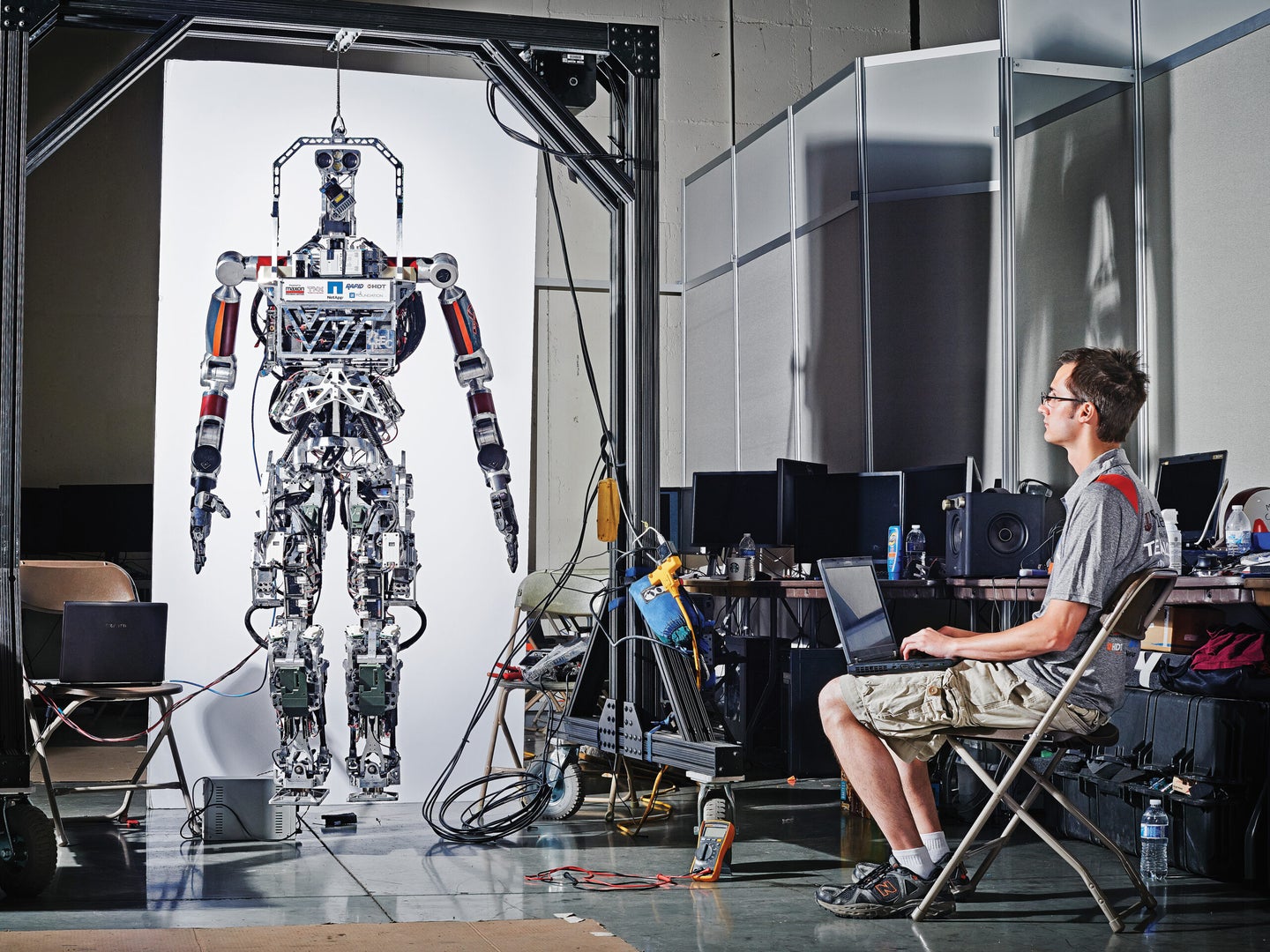Rescue Robots’ Long Road Ahead
One day robots could come to your rescue. First, they have to learn to walk.


Thormang 2 (Team Robotis)
In 2012, DARPA announced the most ambitious robotics competition in history. To kick-start the development of robotic first responders—machines capable of deploying to natural or man-made disasters—the Pentagon’s research agency proposed a series of challenges. Robots would be tasked with navigating and interacting with a mock disaster site. They would open doors, traverse rubble, climb stairs, and turn valves. At times, they would have to act with almost complete autonomy in order to simulate communications breakdowns in a real-life crisis.
Teams from around the world entered the two-year competition. The Pentagon gave some of them multimillion-dollar robots to program, while others received funding to develop their own machines. But despite the generous allotted time and resources, the DARPA Robotics Competition (DRC) would be extremely difficult. Legged robots, by far the most common design in the contest, are notoriously unstable, even when crossing level terrain. For most teams the concern was not winning the DRC. It was surviving it.
The DRC finals were held in June at the Fairplex fairgrounds in Pomona, California. And, sure enough, many robots were hauled away from the two-day event in pieces. Falls were rampant, and every tumble drew sympathetic howls from the thousands of spectators watching from the stands. One humanoid fell so hard, its head flew off its body.
In the end, three teams won a combined $3.5 million in prize money by completing eight tasks in less than an hour. But more to the point, the DRC served as a catalyst for robotics development. It forced many of the world’s leading roboticists to tackle some of the field’s hardest problems. None of the entries left the competition ready to respond to the next big disaster. But thanks to the DRC, the dream of robots that can function in the human world, whether that means pulling victims out of harm’s way or simply assisting the elderly, is closer than ever.
Click through the gallery below to learn more about each robot contestant.
This article was originally published in the January/February 2016 issue of Popular Science, under the title “Protoheroes.”

WALK-MAN (Italian Institute of Technology and University of Pisa)

RoboSimian (Jet Propulsion Laboratory)

Johnny 05 (Darmstadt University of Technology)

ESCHER (Virginia Tech)

DRC-HUBO (KAIST and Rainbow Co.)

Florian (Team ViGIR)

Aero DRC (Team Aero)

CHIMP (Carnegie Mellon University)

Thormang 2 (Team Robotis)